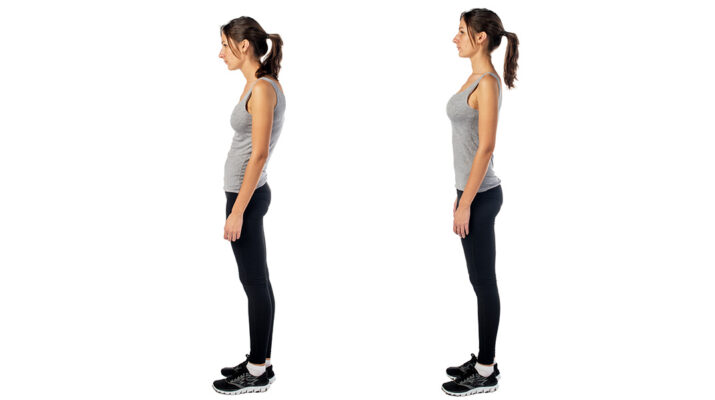How this modality can help improve how you feel through how you move.
By Deborah Jeanne Sergeant

Posture habits affect how your body moves and can cause stiffness, tension and stress.
The Alexander Technique, developed a century ago by F.M. Alexander, teaches students about how to improve and self-correct their posture to foster proper movement, improve performance and alertness and relief chronic issues caused by poor posture.
Many of the people seeking to learn through the Alexander Technique are involved in music performance, acting, dance or other performing arts because of the toll these careers take on the body.
Katie Fittipaldi is certified to teach Alexander Technique and instructs at the Eastman School of Music and the Eastman Community Music School. She is also a cello teacher.
“In AT, we acknowledge that our system works as a whole: the mind and body works together and works best when it’s free to move,” Fittipaldi said. “We’re interested in creating gentle conditions for movement to move freely. We don’t stiffen ourselves in a position. We let those relationships among body parts be in a relationship that’s unstuck and dynamic and ever changing. The system knows how to calibrate. We don’t have to manage all of this directly.”
Instead of positioning the body in a stiff postural position, students are free to move and without effort. Fittipaldi likens it to young children who move freely and without effort or thought about posture. She discovered AT because as a cellist, she wanted to play with less tension and anxiety.
Self-awareness is the first step in AT as students focus on how they’re breathing and how they’re positioned while typing, playing an instrument or doing anything at all. A student may notice he’s holding his breath, tapping a foot or suspending his shoulders. Making the posture more comfortable and easier is the next part of the lesson, along with developing a helpful and healthful habit that holds the body comfortably and without causing problems.
Fittipaldi helps students find the helpful positions and develop the healthful habits.
“It’s about being curious about how we’re responding to live and then letting go of things that aren’t helping us,” she said.
As students continue to learn, they apply AT to other things they do all day, such as sitting in an armchair, walking across the room, standing at the kitchen sink to wash dishes.
“We’re more aware when we’re moving in ways that are hurting us and we can choose ways that are not hurting us,” Fittipaldi said. “If we’re cultivating that kind of relationship with the body, it opens the door to the possibility of pain reduction. They often come with neck, arm or back pain. It’s helpful for injury reduction and prevention.”
In addition, musicians and athletes often come in to improve their performance. And like their professional pursuit, it takes practice to improve in AT. But Fittipaldi sees AT as a way of approaching everyday movement, whether sitting, standing, walking, riding a horse, washing dishes or anything else.
“AT is a gentle way to bring more presence, calm and choice to what we are doing,” she added. “And if we find that we are responding to life in a way that is not particularly helpful, AT offers a way to let go of ways of thinking and moving that are no longer serving us.”
This may include tightening, bracing, straining, generally making things harder than they need to be. Fittipaldi said these responses are often evident during stressful times but can surface at any time.
“Let’s say I’m at Wegmans waiting in line and I give myself some space to stop and tune-in,” Fittipaldi said. “I can ask: Am I moveable? Free to breathe? Gripping the cart? I wonder if this could be easier somehow?”
Musician Kateri Gormley of Rochester also discovered AT through her work as an opera singer. She began to struggle with TMJ because she practices so many hours a day.
“I was feeling really tense and had performance anxiety,” she said. “One of my professors suggested AT and I fell in love with it. My singing improved so dramatically. I didn’t know how stiff my neck had become while I was singing.”
She knew she needed to share the modality with others, so she became certified to teach. She also offers voice lessons as voice and movement with Kateri in the Rochester area.
Although she sought AT for her jaw, she noticed positive results in other areas of her body, such as her bunions disappeared, which she attributes to her balance and movement improving.
She enjoys sharing AT with other musicians. They mention spending six or eight hours practicing as a badge of dedication to their art. However, Gormley said that the quality of the practice time makes a difference, including how it’s done.
“You don’t need to grip the steering wheel hard as you drive,” she said. “It contributes to how you feel in all of your daily activities. AT brings awareness to all your activities throughout the day.”
AT also helped her performance anxiety, as the physical and emotional selves are inseparable. Learning to relax the physical aspect of herself helped her relax emotionally.
“Learning to pause and to make choices in how I want to respond has changed my life in so many great ways,” Gormley said. “Just a course of 10 to 20 lessons can leave you in a much different place than when you began. There are connections to be made and it can be very useful.”

